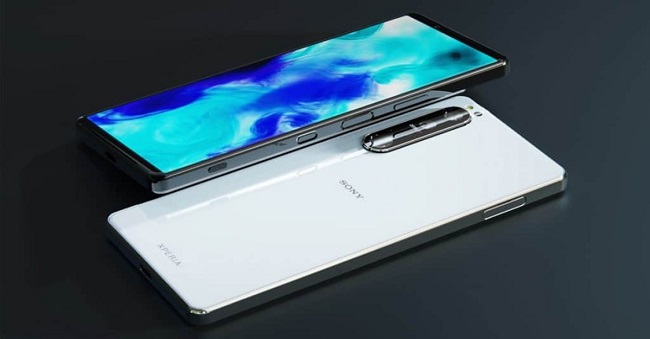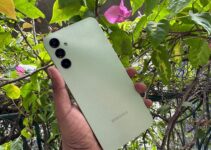Sony, a renowned name in the world of technology, is back with its latest offering, the Sony Xperia L5 5G. With a reputation for innovation and quality, Sony’s Xperia series has always been eagerly anticipated.
In this article, we will delve into the details of the Sony Xperia L5 5G, explaining its meaning, specifications, and what sets it apart in the competitive world of smartphones.
All You Need To Know About the Sony Xperia L5 5G
Although, the Xperia 5’s battery is just slightly smaller than the one in the Xperia 1, yet the Xperia 5 has substantially greater battery life than the Xperia 1 because of its smaller screen.
Sony Xperia L5 5G Battery Quality:
Even with heavy use including streaming music and some gaming, the Xperia 5 lasted us the entire day without a hitch. Even if we didn’t expect it, the handset wouldn’t last more than a day under intense use, such as when we played games for extended durations or watched several movies.
Playing a video at maximum brightness for 90 minutes with Wi-Fi and account syncing running in the background resulted in only a 12% reduction in battery life on the Sony Xperia 5.
Read Also:
- All You Need To Know iPhone 13 Pro Max
- All You Need To Know Samsung Galaxy S21 FE
- All You Need To Know Samsung Galaxy A14 5G
That’s a lot less of a decline than the 17% seen in the Xperia 1, and it suggests that the Xperia 5 will last you for a lot longer while streaming video. Well, it’s a really standard fall for a smartphone, so that’s nice too.
Although though Sony doesn’t advertise it as such, the Xperia 5 comes with a fast charger that can supply 18 watts of power. This should allow for quite rapid charging times. Given the small battery size, we were not surprised to find that the 18W charger quickly recharged the phone.
We could charge the phone for an hour before going to work and have plenty of juice to last all day, or for a few minutes in between episodes of our favourite shows to keep it going strong until the credits roll. A feature present in the Xperia 1 and absent here is Adaptive Charging.
You could set a target time for the phone to be fully charged, and it would adjust its charging rate so that the battery wouldn’t be under excessive strain from being at 100% for too long. It’s regrettable that Sony didn’t include this helpful feature to safeguard the Xperia 5 over the long haul.
Although wireless charging is available on many other smartphones, the Sony Xperia 5 lacks this function. However, few smartphones in this price range have wireless charging.
Sony Xperia L5 5G Camera:
Three 12 megapixel cameras (one wide-angle, one telephoto, and one ultra-wide) are packed within the Sony Xperia 5. Those are the same components found in the Xperia 1, so you may recognise them.
Although while Sony’s Alpha family of mirrorless cameras are some of the best cameras on the market, and a lot of that innovation makes its way into the company’s smartphones, the Xperia 5’s cameras still fall short of the top camera phones.
The telephoto lens offers a 10x digital zoom in addition to the 2x optical zoom it provides, so it’s great for capturing distant objects as long as you don’t expect them to look particularly sharp. In some situations, such as when trying to fit more people into a photo or while shooting a gathering of friends, the ultra-wide-angle lens comes in handy.
But, similar to our experience with the Xperia 1, we noticed that the edges of wide-angle photos appeared slightly warped. The Xperia 5’s scene optimisation feature seems faster than that of the Xperia 1 at recognising subjects and adjusting white balance and colour settings to suit them.
Even though this optimizer does much of the heavy lifting in low-light conditions, the Xperia 5 struggles to capture usable images in the dark. The camera’s autofocus is still a little sluggish, and we occasionally had to wait for it to lock onto our subject.
This was true for both portrait and regular modes, but the effects of a blurry portrait image were especially disappointing. The camera performs better when used for casual photography; the 12MP sensor produces satisfactory results in most situations.
Those accustomed to the post-processing on their smartphones, which is typically designed to make colours pop as much as possible, may be taken aback by how natural the colours appear.
The screen of the Xperia 5 makes images appear dimmer than they actually are, although this is not the fault of the camera. When the phone is held in landscape mode, the shutter button for the camera is located on the side, similar to the shutter button on a traditional camera.
It’s simple to operate and eliminates shake while taking photos with a smartphone by eliminating the need to reach for the screen to press the shutter button. The only drawback is that we often forgot to use the dedicated button and instead used the on-screen one.
Sony Xperia L5 5G: Unveiling the Meaning and Features
The Sony Xperia L5 5G is the latest addition to Sony’s Xperia lineup, and it promises to deliver a blend of cutting-edge technology and Sony’s signature design and quality. Let’s explore the key features and capabilities of this remarkable device:
- 5G Connectivity: The “5G” in the name signifies the device’s compatibility with the fifth-generation (5G) wireless network technology. This ensures faster data speeds, reduced latency, and an enhanced overall internet experience.
- Stunning Display: The Xperia L5 5G boasts a high-quality display that showcases vibrant colors and sharp details, providing an immersive viewing experience for multimedia, gaming, and more.
- Powerful Performance: Under the hood, you’ll find a robust processor that ensures smooth multitasking, speedy app launches, and efficient performance for a variety of tasks.
- Impressive Camera System: Sony has equipped the Xperia L5 5G with a versatile camera system, enabling users to capture stunning photos and videos in various scenarios. This includes both primary and selfie cameras, which offer features such as enhanced low-light performance and advanced photography modes.
- Long-lasting Battery: The device is equipped with a reliable battery that provides extended usage time, ensuring that you stay connected throughout the day without frequent recharging.
- Sony’s Signature Audio: Sony is renowned for its audio technology, and the Xperia L5 5G is no exception. It delivers high-quality sound for both music and calls, enhancing the overall user experience.
- Ergonomic Design: Sony has always focused on design aesthetics, and the Xperia L5 5G is no different. It features an ergonomic design that combines functionality with a sleek and stylish appearance.
What Sets the Sony Xperia L5 5G Apart?
The Sony Xperia L5 5G distinguishes itself in several ways:
- 5G Connectivity: The inclusion of 5G support ensures lightning-fast internet speeds, making it ideal for streaming high-definition content, online gaming, and quick downloads.
- Sony’s Camera Expertise: Sony’s expertise in imaging technology shines through in the Xperia L5 5G’s camera system, providing users with the tools to capture memorable moments with exceptional clarity and quality.
- Battery Efficiency: The device’s optimized battery management ensures that users can enjoy their smartphone for extended periods without the need for frequent charging.
- Immersive Entertainment: The stunning display and Sony’s audio technology make the Xperia L5 5G a perfect companion for entertainment, whether you’re watching movies, playing games, or listening to music.
- Sony’s Commitment to Quality: Sony has a long-standing reputation for delivering high-quality products, and the Xperia L5 5G is no exception. It reflects Sony’s commitment to excellence in design, performance, and user experience.
Practical Uses and Applications
The Sony Xperia L5 5G caters to a wide range of user needs and applications:
- High-Speed Internet: With 5G connectivity, users can enjoy seamless browsing, streaming, and online gaming experiences without the frustration of slow internet speeds.
- Photography Enthusiasts: The advanced camera system allows photography enthusiasts to capture stunning photos and videos with ease. Features like enhanced low-light performance and photography modes provide endless creative possibilities.
- Entertainment Hub: The device’s stunning display and audio quality make it a go-to choice for entertainment on the go, whether you’re watching movies, playing games, or enjoying music.
- Productivity: The Xperia L5 5G’s efficient performance and multitasking capabilities make it a valuable tool for productivity, allowing users to stay organized and connected.
- Communication: With its reliable battery life and high-quality sound, the Xperia L5 5G is ideal for staying in touch with friends, family, and colleagues through calls, video chats, and messaging apps.
Read Also:
- All You Need To Know Nokia G60
- All You Need To Know Nokia G21
- All You Need To Know Huawei Nova 10 SE
Conclusion
In conclusion, the Sony Xperia L5 5G represents Sony’s commitment to delivering high-quality, innovative smartphones that cater to the evolving needs of users. With its 5G connectivity, advanced camera system, stunning display, and long-lasting battery, it offers a comprehensive solution for communication, entertainment, productivity, and photography.
The Xperia L5 5G embodies Sony’s dedication to providing a premium smartphone experience that combines cutting-edge technology with stylish design and exceptional performance.
Whether you’re a tech enthusiast, a photography enthusiast, or simply looking for a reliable and feature-rich smartphone, the Sony Xperia L5 5G is worth considering for its meaningful impact on the world of mobile technology and the exceptional experiences it offers to users.



